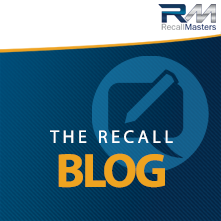The Modern-Day Donner Party – When the Power Runs Out!
The Modern-Day Donner Party – When the Power Runs Out!
A Blog Post by Sean Reyes, Chief Marketing Officer for Recall Masters
During the winter of 1846-1847, the Donner Party found themselves stranded in the Sierra Nevada mountains. Of course, they didn’t have the advanced technology we have these days, so things went from bad to worse rather quickly. If you’re familiar with the story, you’ll know the ending. It wasn’t the zombie apocalypse, but it was close. What does this story of tragedy and bad decision-making have to do with the automotive industry? More than you know.
Fast forward to modern days. I’ve seen power grids in California go down because of excessive use of air conditioners during times of extreme heat. There have also been, though more rarely, situations where the heat was cut off. That’s life on the west coast. It’s probably no different from ice storms in the East that pull power lines down to the ground. However, we’re on the brink of massive migration to electric vehicles. What would the driver of an electric vehicle do if the power grid went down in California or on the East Coast and they found themselves stranded?
Living on the West Coast, I am familiar with power outages and how they affect people. But what I haven’t thought about is the possible consequences of extremely cold weather. It’s just a weather pattern I’m not particularly familiar with. That’s exactly how stories like the Donner Party make their journey from generation to generation – tales of such historic misfortune amidst conditions that appear so preventable by modern-day conditions. We’ve learned, haven’t we? Maybe not.
Consider the recent event on I-95 in Virginia. According to an article by the Washington Post, a 48-mile traffic jam happened in 19-degree cold weather. The vehicles stranded were a mixture of big rig trucks, ICE (Internal Combustible Engine) vehicles, Hybrids, and Electric vehicles. Many of these drivers were unprepared for these conditions (or this traffic jam) and relied on the heat from their vehicles to stay warm.
With a gas-powered vehicle, you can simply take a container and get some gas. Even if that means walking to the nearest gas station. On the other side of the spectrum, electric vehicles require charging stations. If those charging stations aren’t immediately available, it’s only a matter of time before your source of heat perishes. If the battery dies (which happens much faster in cold weather), the driver has no simple way to recharge the vehicle and it then blocks the way for other vehicles to proceed. There is no easy solution, as you cannot simply drive into a 48-mile traffic jam to recharge your EV. If you could, there wouldn’t be a traffic jam!
This brings me to the meat and potatoes of this blog.
The Federal government is creating legislation mandating that auto manufacturers phase out ICE vehicles altogether, leaving US consumers the choice to purchase only EVs. What would happen if every single one of the vehicles in the 48-mile traffic jam in 19-degree temperatures was electric?
Is this something that the NHTSA should get involved in? Again, if a vehicle fails to safeguard consumers, it’s considered a candidate for a recall. In this case, there’s no malfunction, as would be the case if an ICE vehicle ran out of gas.
Still, are we failing to heed the warning issued on I-95? What can we learn from this event? The tragedy was averted thanks to the goodwill of fellow drivers, but what happens when we’re all driving EVs? There’s nowhere to run.
Should a continued push on this legislation also be accompanied by a comprehensive plan for charging stations along every highway or road? If so, who does that? The state or Federal government?
There’s a crack in the EV infrastructure that could be deadly. We’re all just unsuspecting travelers on a journey toward grave circumstances – a modern-day Donner Party if you will.
Something has to change to prevent this type of cold-weather situation that includes EVs getting stuck due to a lack of charging stations. The mid-1800 conditions which seemed so avoidable have come back around to haunt us in the form of an infrastructure that is clearly not in place. We can’t pretend Virginia didn’t happen. The only question that remains is whether we intend to do something about it.
About the Author


